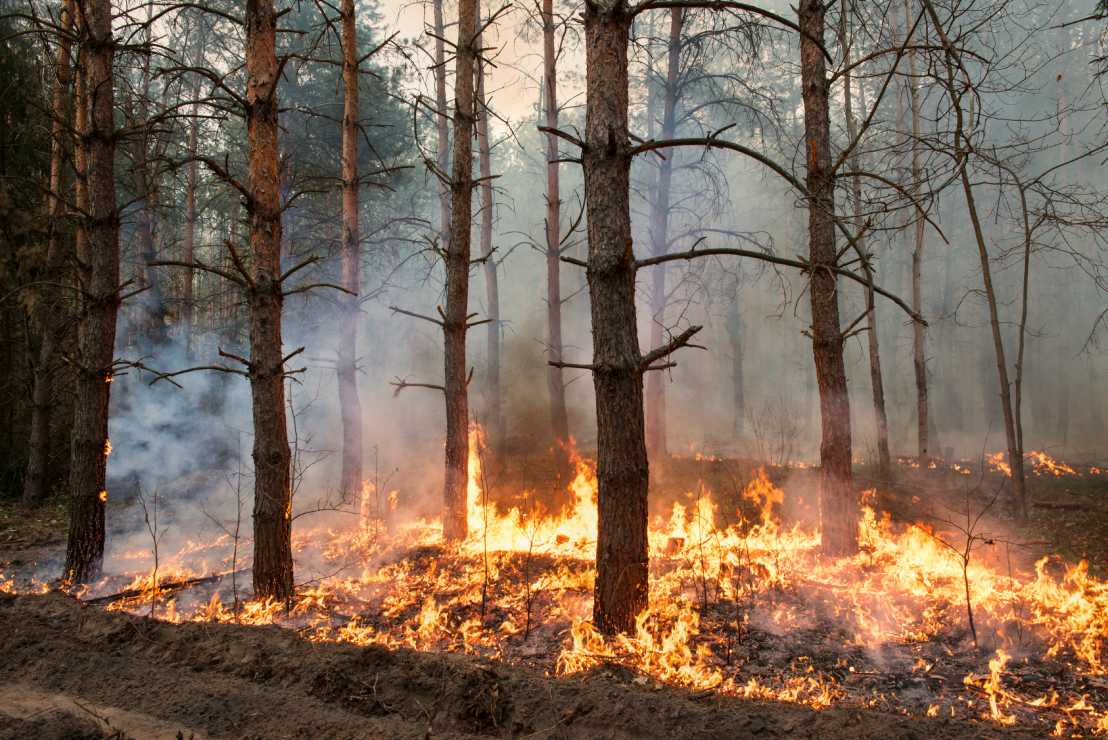Paleo fires from high-alpine ice cores
Fires play a major role in the global carbon budget through emissions of greenhouse gases and aerosols. On a global scale today’s biomass burning emissions contribute roughly 50% of those from fossil fuel combustion. However, the most important drivers for the long-term biomass burning trend are still largely debated. During the last 150 years a decoupling of fire activity from the main drivers temperature and population density was suggested. Because of its typical shape the reconstructed fire activity pattern was denominated "broken" fire hockey stick (in contrast to the term of "hockey stick" used for temperature trends). The decoupling between fire and climate is in agreement with increases in landscape fragmentation, but is not supported by other data such as methane concentrations, implying that the underlying processes are not fully understood. This lack of understanding in combination with the worldwide occurrence of devastating wildfires in the past decades raises major concerns about the capacity to manage fire under future climate change scenarios.
The project "Paleo fires from high-alpine ice cores" (Paleo Fires) is an integrated research frame work aiming to test the hypothesis of the "broken" fire hockey stick. The overall objective is to significantly advance the understanding of the complex systemic linkages between climate, land use, fire and vegetation for different regions over the most recent period of the last 150 years in comparison to the previous 2000 years.
Paleo fires develops a comprehensive approach by combining multi-proxy high-alpine ice core records in four geographical areas (Central Europe, Southern Siberia, tropical Amazonia, and the Arctic), using Black Carbon (BC) and charcoal as fire tracers, coinciding observations from satellites (when available), and back trajectories and global modelling of tracers relevant for biomass burning emission.
The project "Paleo fires from high-alpine ice cores" is funded by the external page Sinergia program of the external page Swiss National Science Foundation and coordinated by Margit Schwikowski (external page Paul Scherrer Institute). It includes the following partners:
- external page Laboratory of Environmental Chemistry, PSI, PI: Margit Schwikowski
- Atmospheric Physics, ETH, PI: Ulrike Lohmann
- external page Terrestrial Paleoecology, University of Bern, PI: Willy Tinner
- external page Remote Sensing Group, University of Bern, PI: Stefan Wunderle
The project PaleoFires is organised in 4 subprojects which are all intimely connected.
- Subproject A makes available the existing well-dated ice core samples, establishes regional BC ice core records over the last 2 ka, attributes the biomass burning source using radio-carbon and specific molecular fire tracers records, collects two new shallow and one deep ice cores and and provides sub-continental fire records for model validation.
Personal involved
- external page Margit Schwikowski (lead) - Subproject B aims to reconstruct trends in biomass burning over the past 2 ka from charcoal analyses, disentangle climate, vegetation and human impacts as drivers of biomass burning from pollen and spore analyses, assess vegetation and societal responses, and provide regional fire records for model validation.
Personal involved
- external page Willy Tinner (lead)
- Subproject C provides a modelling framework to put the ice cores data in a broad context and to relate locally observed ice core records with large-scale patterns of fire emissions and transport of fire-relevant tracers. In particular, subproject C determines the atmospheric footprints of the four ice cores to quantify how different sources (including fires) may have contributed to BC and charcoal observed in the ice cores when one considers time-specific weather patterns (large scale flow, precipitation, etc.).
Personal involved
- Ulrike Lohmann (lead)
- Subproject D provides information on fires to support modelling of backward trajectories and assess the accuracy of satellite fire retrievals caused by varying spatial resolutions for the different sites, compile a 30 year time series of fires with relevance to BC and charcoal records, allowing to develop quantitative transfer functions through identification of single fire events. The consistent time-series are used to investigate the influence of climate on the annual fire frequency and analyse the differences for temperate, boreal and tropical regions.
Personal involved
- external page Stefan Wunderle (lead)
